One old truck, a new camper shell, and a month of adventuring…road-tripping around Utah, Wyoming and Colorado. Our maiden voyage with a newly DIY’d seeping platform and storage solution in our Tacoma, we managed to spend 10 nights boondocking, 11 nights backpacking, and 6 nights in actual beds. Here’s how it went, what we learned, what we liked, and why you should do something like it!
The Grand Idea
Living a more nomadic lifestyle, traveling for a longer period of time…that sounds cool, right? But before selling everything and moving into a van down by the river, I remembered the principles of lifestyle design. Ideate, Prototype, Test, Scale. So, first step was done, I had an idea. Prototype and Test was next. Lots of scribbling in notebooks, and it was decided that we would buy a camper shell, convert the bed of my Tacoma into a sleeping/storage area for all our camping gear, and we’d hit the road for about a month. A guiding principle was, of course, to keep it as inexpensive as possible. We would also have to work our ‘day jobs’ a bit along the way.
The Truck Set-up
I poured over the internet and watched hours of YouTube videos on truck bed camper builds. There were several design objectives. It must not only hold all our stuff, but allow us to easily access stuff when needed. We had to be able to cook/hang out in it if weather was bad. Of course, you had to be able to sleep comfortably in it, as well. I took ideas from several different lovely builds, and Frankensteined them into a complex, ambitious bespoke design. Luckily, my partner is a talented and brave amateur carpenter who did all of the actual figuring out how to make things work. And, of course, actually built it.
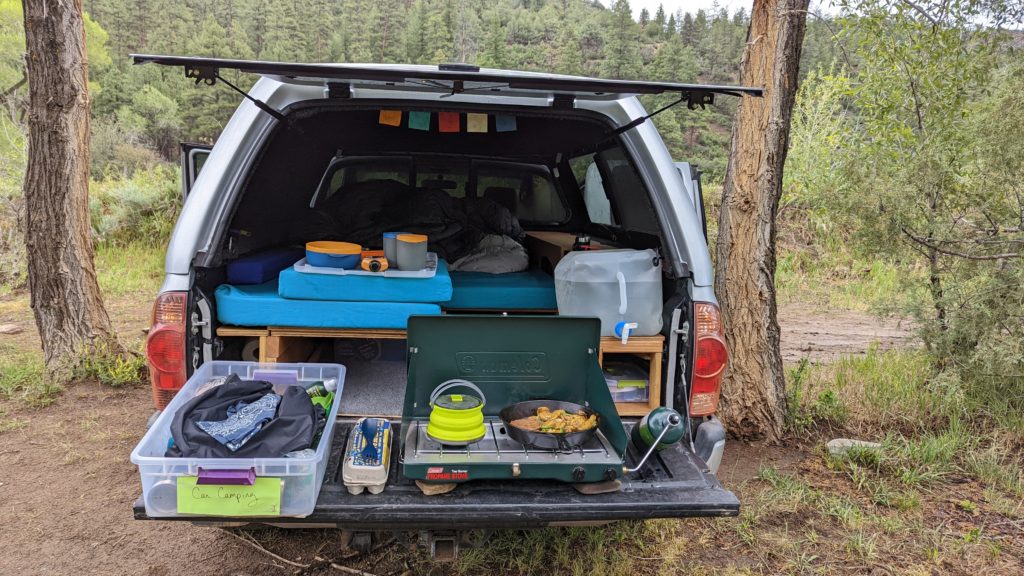
The result was a modular platform that can be a bed or couch that is suspended over storage containers that can all be accessed even while enclosed in the camper shell. In addition, there is a storage cabinet with space on top for cooking, eating, putting your beer down, etc. A full description of all the nitty-gritty details coming soon.
What is Boondocking?
In case you’re not familiar with the term, boondocking is basically ‘car camping’ somewhere that isn’t a defined camp ground. It is also called dispersed camping. It is usually legal to do off forest roads, and you’ve probably seen vehicles of all sorts pulled off into areas that are well established for the purpose.
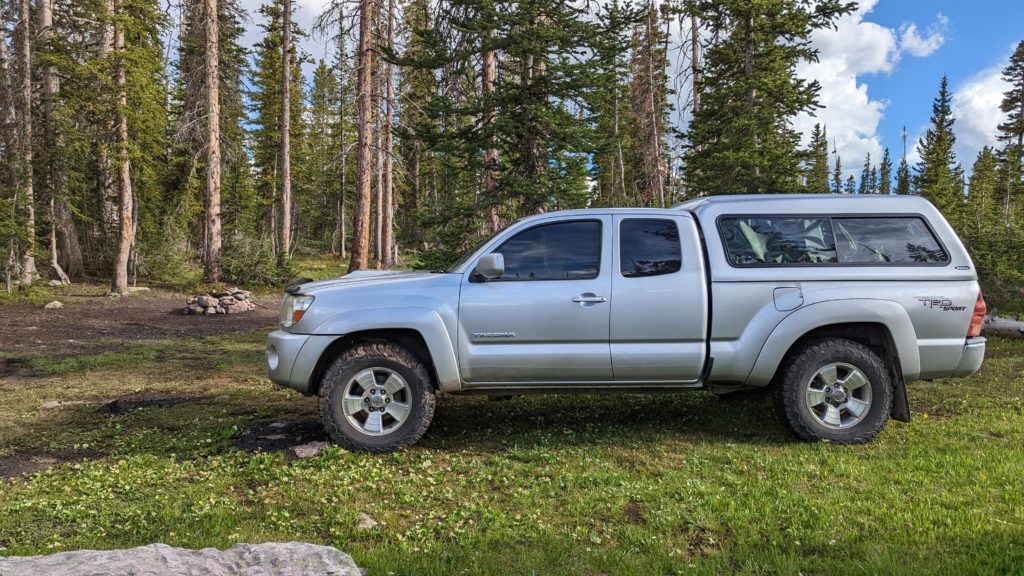
Boondocking is a bit like playing the lottery, there’s no way to know exactly what exists, or reserve anything ahead of time. We found the app, iOverlander, with crowd-sourced information on places people have boondocked. People will tell you what the spot was like, if they had cell reception, etc. We used it a lot on our trip and found it immensely helpful.
Utah’s High Uintas
First stop was a night of boondocking near the mirror lake trail head in the Uinta Mountain Range. The truck set up did great. We were able to pull out everything we needed to cook a delicious meal. Just as we were done cooking, it started raining, so we were able to hop in the shell, move some stuff around to go into ‘couch’ mode and eat. When we were done, we put everything back into ‘bed’ mode and went to sleep like babies.
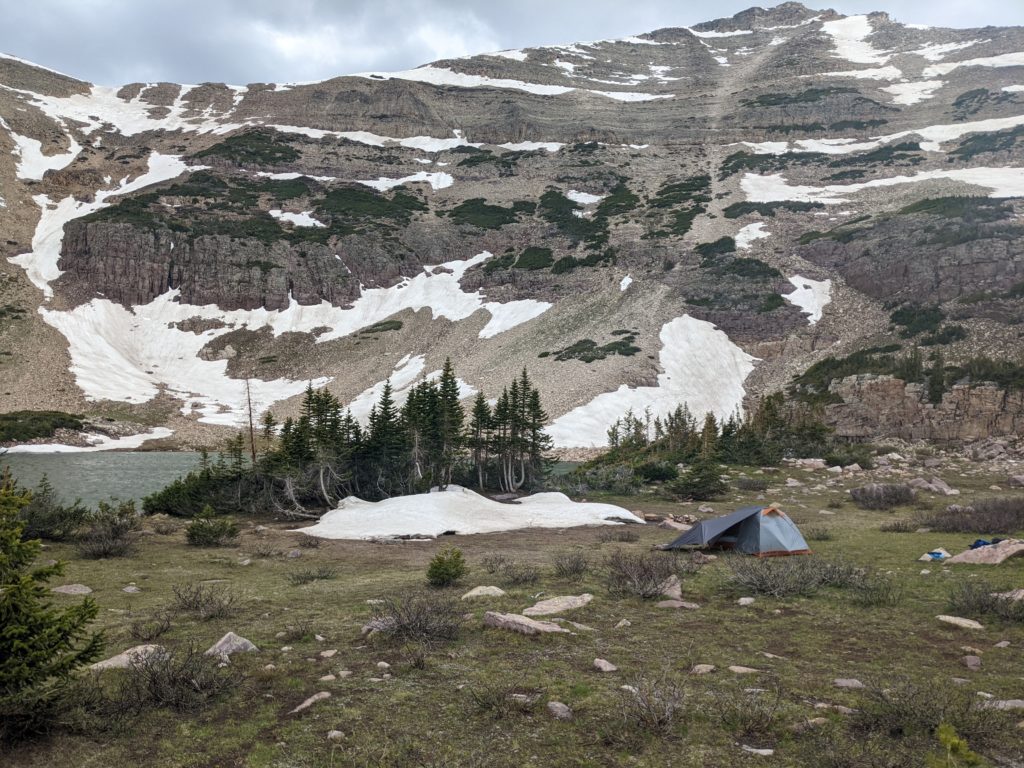
Our destination in the Uintas was Naturalist Basin for two nights of tent camping. Our first night, we appropriately ended up at Blue Lake, just above the most popular destination, Jordan Lake. We had the lake to ourselves, and after a failed attempt to start a fire in sprinkling rain with little appropriate wood, we gave up and retired to the tent for dinner. We make all our own backpacking meals, more about that, and one of our favorite new pieces of gear here.
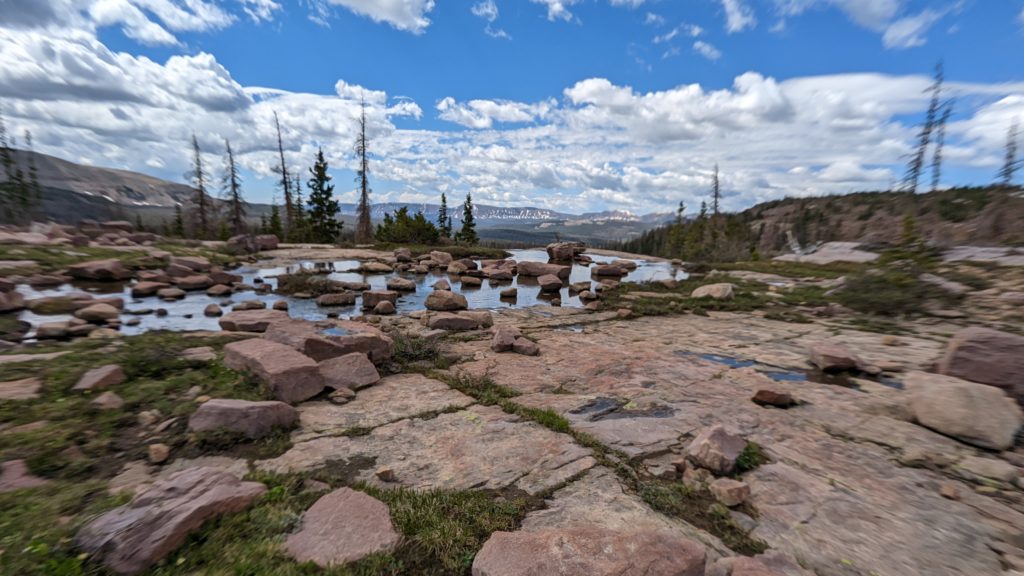
The next day, we explored more of the basin, which was truly beautiful! There are layers of rock flats with unique formations, waterfalls cascading down from one level to the next. Tons of moose, deer and elk tracks, though we didn’t run into any. We passed several more pristine lakes, eventually pitching tent next to Faxon lake looking towards a giant glacier slowly creeping towards the water.
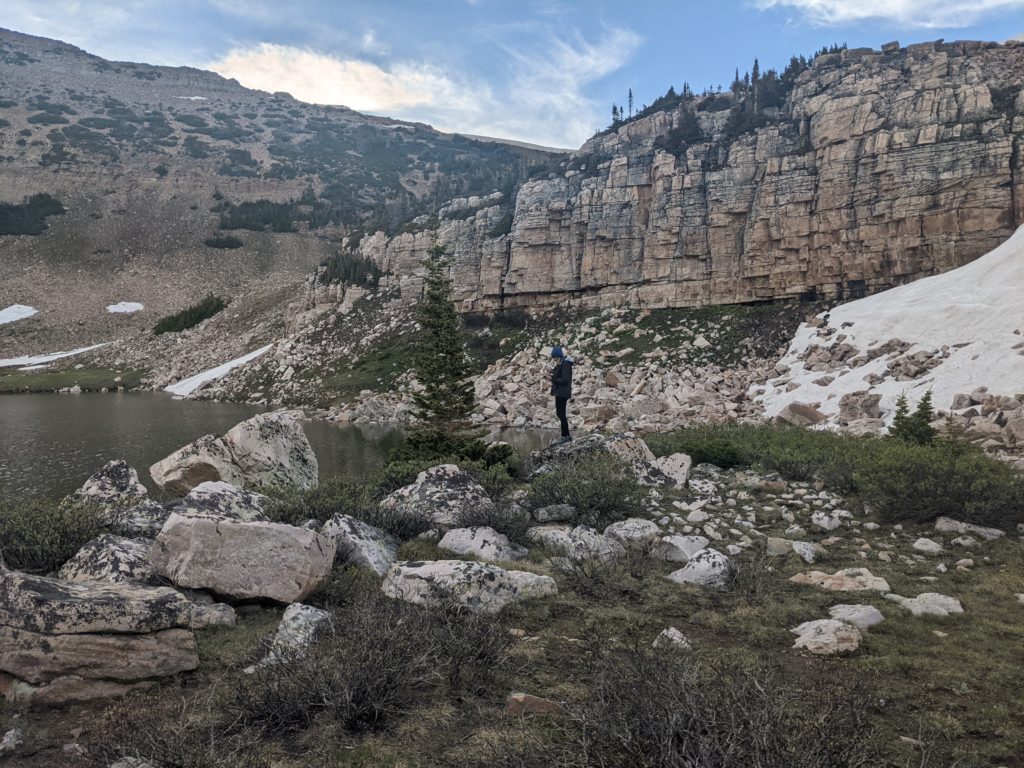
The next morning, we hiked out, past Jordan lake, which had many campers on its shore. We made it back to the Tacoma and headed on to our next destination.
Bear Lake
Another part of this grand experiment was trying out kayaking. Any body of water larger than a bath tub scares me, so this quite a stretch for me….but we must push ourselves, right?!
We purchased an inflatable kayak, as we needed a vessel that would fit in the truck. We went with the Sea Eagle S 370 which was recommended by a friend as a good, reliable starter boat. The maiden voyage on Bear Lake in far northeast Utah went well. The lake is enormous, but there are several beaches and it stays shallow for a good bit, so it was easy to put in, and explore around the lake edges without getting into anything too dicey.
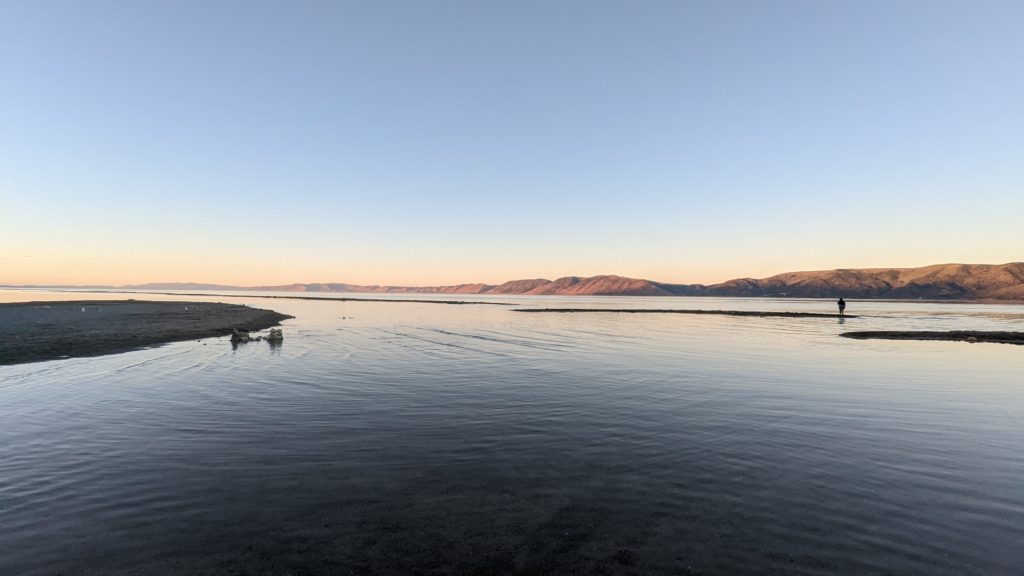
Bear Lake was actually a family reunion for my partner, and they had rented an enormous house. However, despite being huge, there still wasn’t enough bedrooms for everyone. No problem for us, we just boondocked in the driveway!
During the day, of course, we had access to a kitchen, shower, electricity, internet. We managed to fit in a couple of half days of work to keep our corporate overlords happy, and still hang out with family. There was lots of eating, gaming, children’s talent shows. And we got to escape to our cozy camper whenever we wanted!
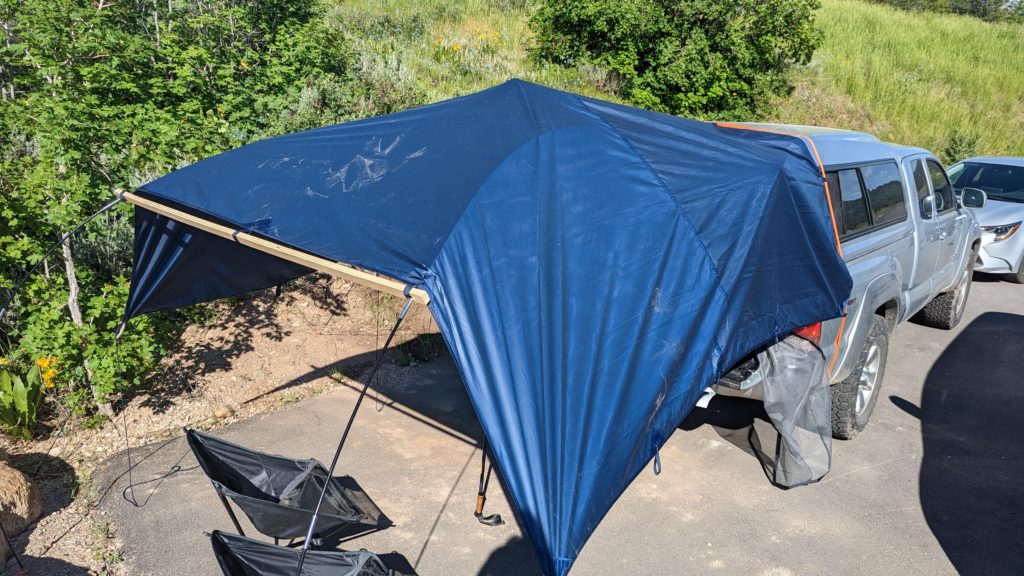
Wyoming’s Wind River Range
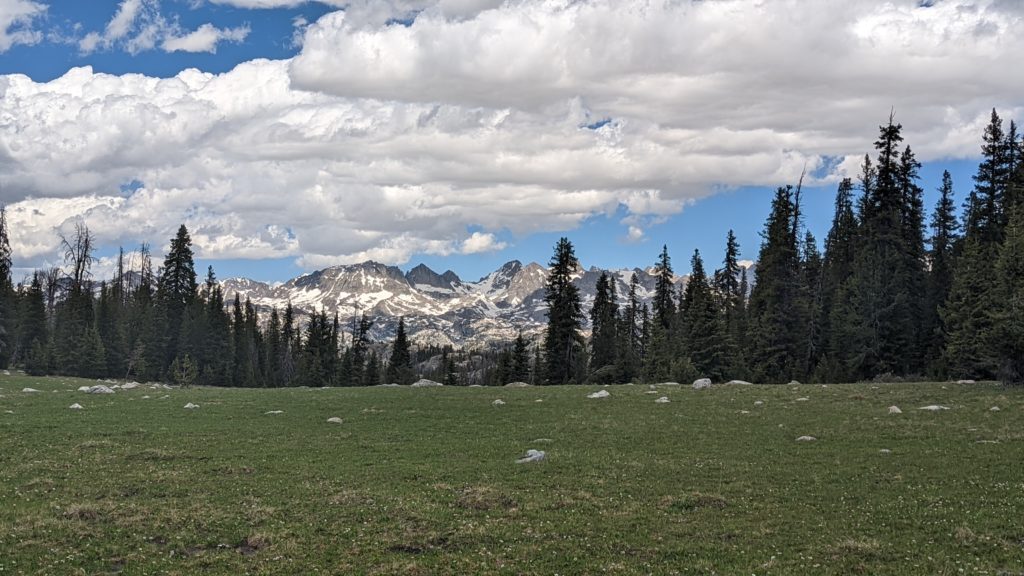
Next stop, Wyoming. The Wind River Range is in 750,000 acres of protected public land in Western Wyoming. The area has something like 130 glaciers, 1,300 alpine lakes, and 30 peaks over 13,000 feet. It is a backpackers heaven. We spent four nights among the jagged peaks, sleeping next to pristine lakes, fording rivers and crossing snow packs by day.
Only two miles in, we happened upon a bull moose, accidentally walking up on him at the edge of one of the many lakes in the area. As we rounded a corner, he whipped around in surprise. There was a split second where he seemed to consider whether he needed to show us what his antlers were for, but we were already quickly walking backwards, scrambling up a hill with lots of dense tree trunks. It seemed enough for him to decide that he better things to do that day, so he turned and walked the other way.
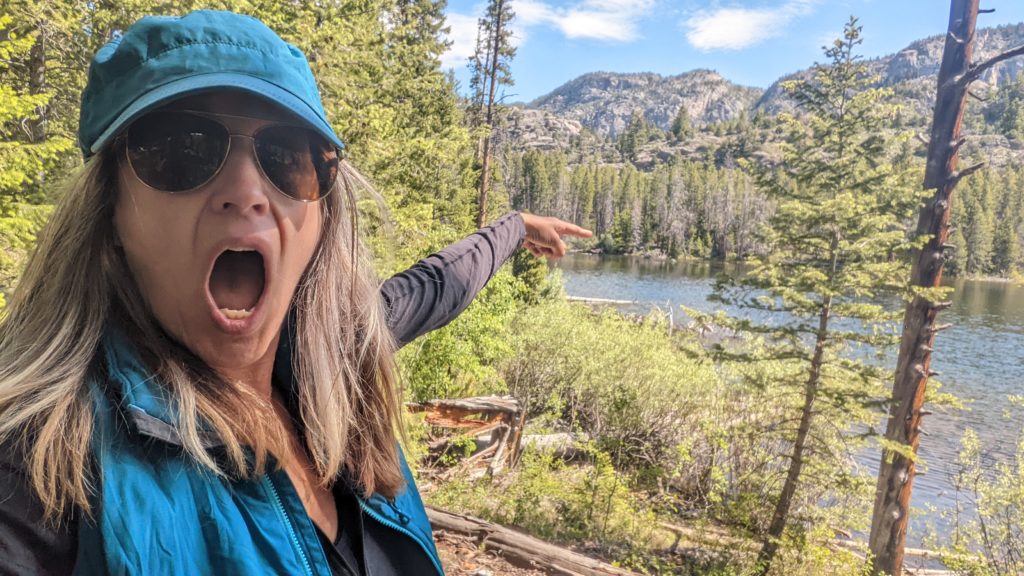
Once I started breathing again, and giving the big guy enough time to mosey on, we went to check out the lake. To our surprise, the moose had chosen to cross the lake rather than possibly deal with humans again. We watched him majestically maneuver through the deep water, in complete awe. Can you find him in the picture above?
Summit Lake Loop
Our first stop on our 41 mile loop was Trapper Lake. The way we went, it was a moderate 10 mile hike. It has a lovely beach on one end, which was a soft place to splay out after the long walk. We had the place to ourselves, as we saw no other hikers, and had no other campers overnight. We did, however, wake up to another bull moose, and had a great time quietly watching him do his thing from a distance.
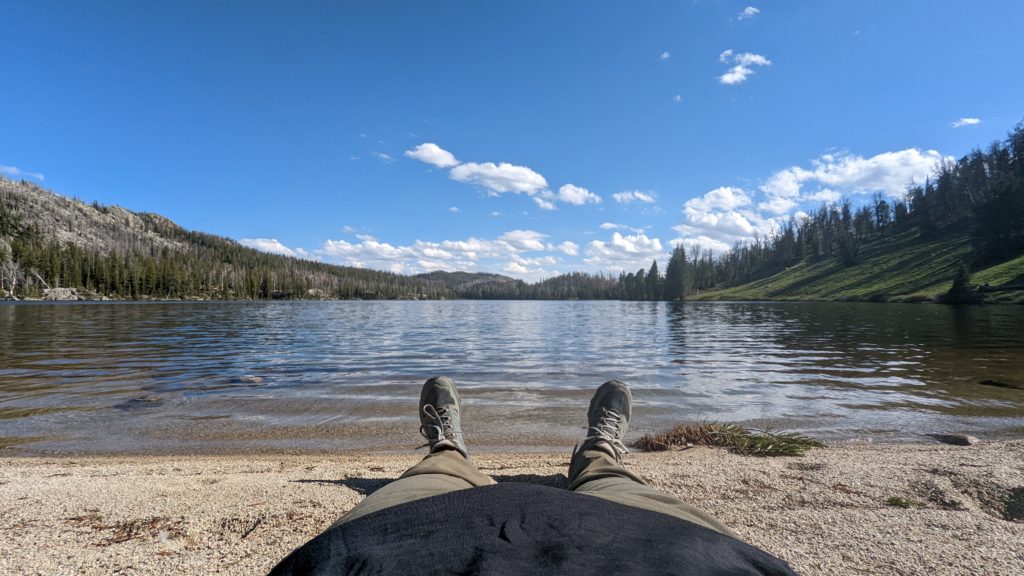
Let the Mountaineering Begin
Next day’s hike was much more difficult, and very wet. We were hiking in early July, but in this particular year, the streams were flowing like early spring, and the snow pack had not receded. The trail took us straight through some swift creeks, and we eventually just resigned ourselves to having wet feet for the entire day. The trail also disappeared under snow banks, making us choose whether to try and scramble around, or go over, knowing that falling waist deep into the snow was likely to happen, at least from time to time.
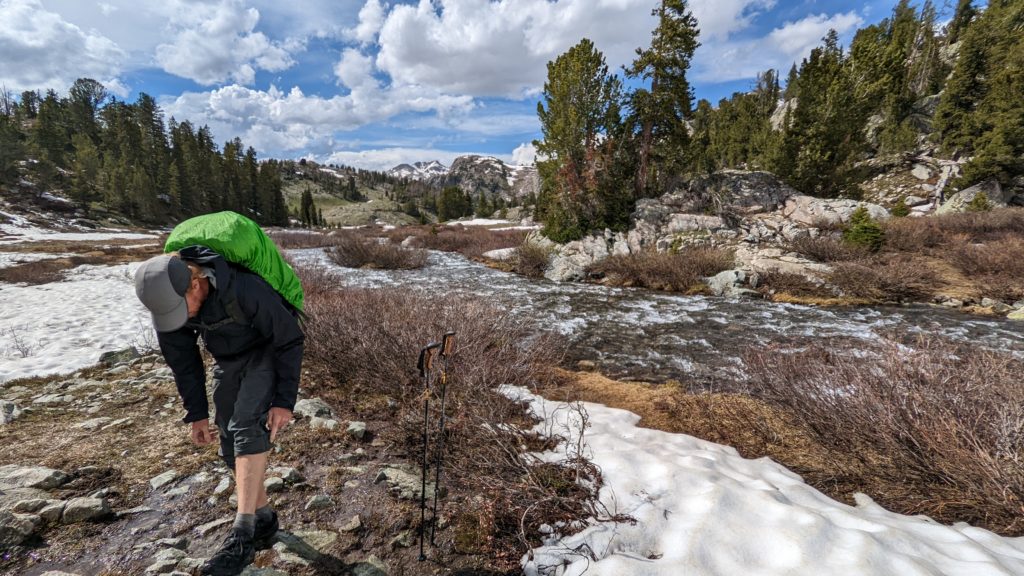
The day was very long, and we saw no other hikers the entire day. At some point, I realized that I was about 19 miles from a trail head, in any which direction. It was definitely humbling. It made we realize that I had to just keep walking and trust that we would handle whatever came up. We had the right gear, we had food for days, we had a map and knew how to read it. We would be okay.
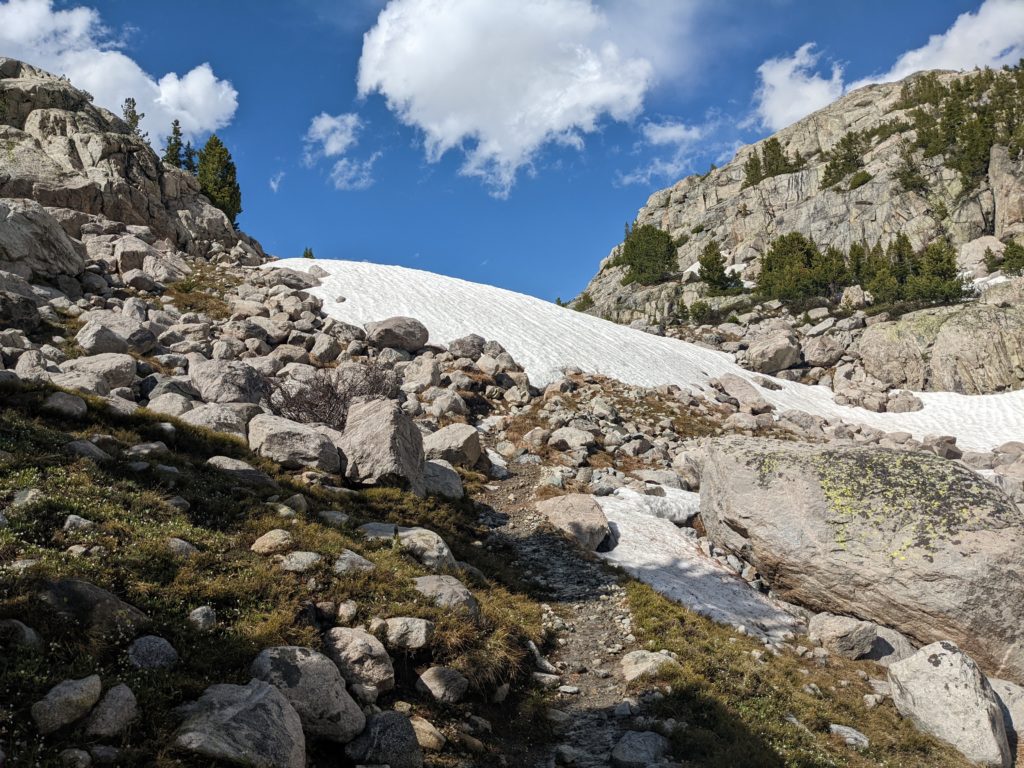
Despite the long day, we did take time to celebrate the high point of our hike at Summit Lake. This is also where we got on the Continental Divide Trail. The 3000 mile trail runs from the Mexican border to Alberta, Canada. Some hard core thru hikers set out to hike the entire CDT. We knocked off about 10 miles of it 😉
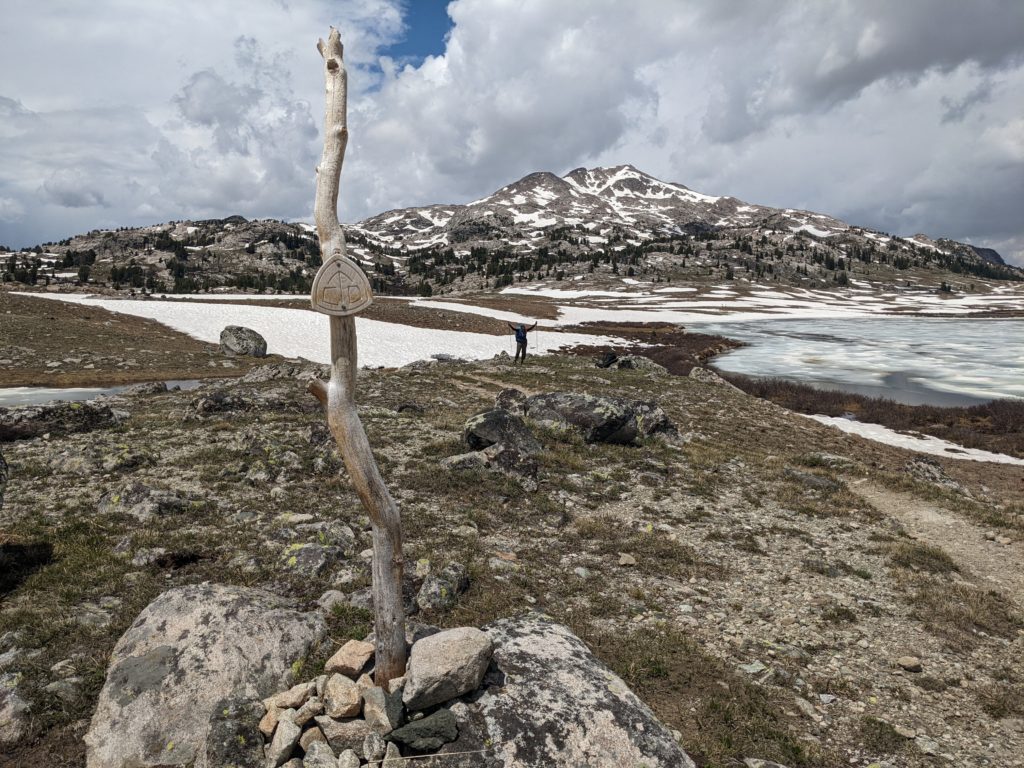
We were very happy to find a spot of dry dirt at frosty Elbow Lake to call it a night. Once again, we had the lake all to ourselves, probably because most people were smarter than us and were waiting until later into the season to venture here.
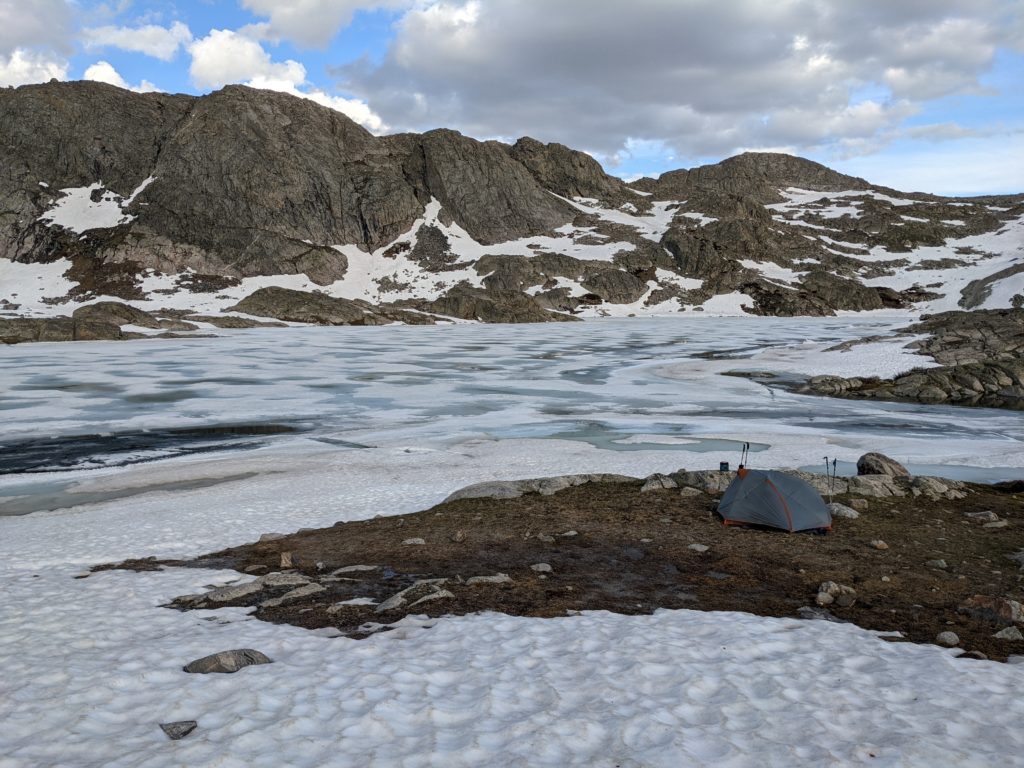
Water everywhere
Day 3 was more wet, wet, wet. There were snow fields, rushing streams and even a lake to cross. Yep, the trail was actually swallowed up by a lake, which was butting up against a cliff….no choice but to walk through the knee high chilly lake water.
Definitely the highlight of the day was day seeing a white wolf! It was very adeptly climbing straight up a snowy steep, a couple hundred yards away from us. Miraculous that we noticed the white animal, (my partner says it was a gray wolf, but it looked white to me,) on the white snow, and we definitely rubbed our eyes a few times, doubting what we were seeing. It glanced down towards us a few times, with what seemed like disdain. As if he were judging how ridiculous it was for us silly humans to try and exist in his environment.
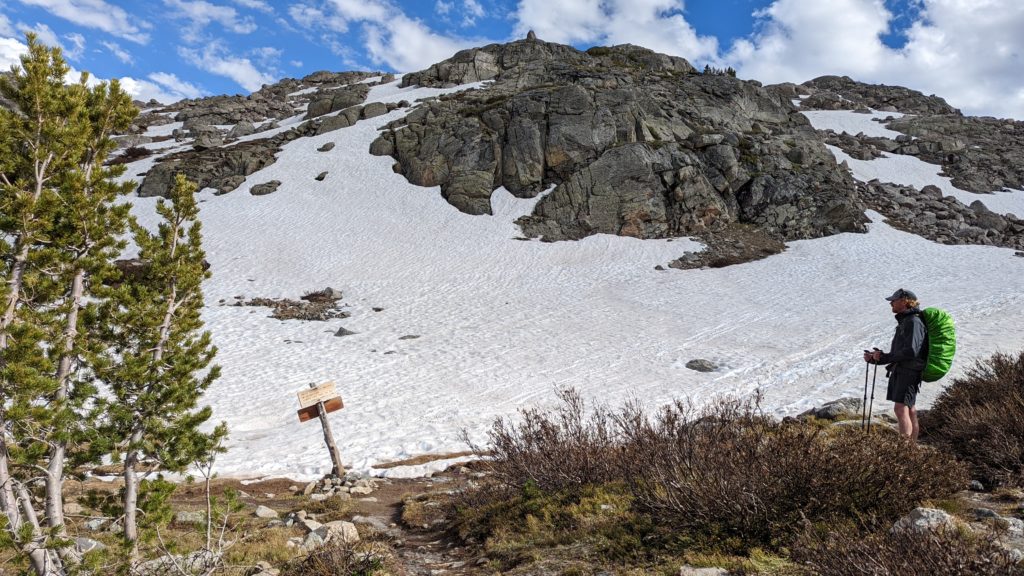
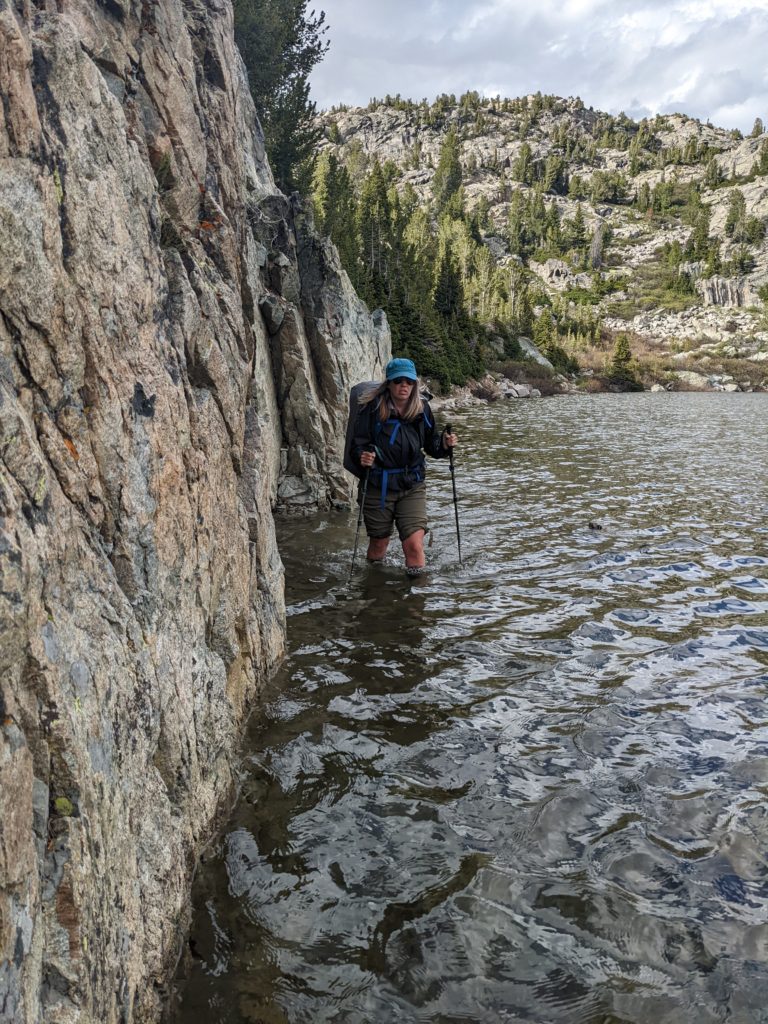
Seneca Lake was where we ended up for the night. We had hoped to make it to Hobbs Lake, but we happened to run into a Park Ranger on our way who said they had reports of a ‘nuisance bear’ who was breaking into people’s tents. The Ranger said a hiker had been able to scare the bear away once, but it returned later that same day. I was not prepared to share my picnic basket with Yogi after a long days hike! There was no way I was staying anywhere near Hobbs Lake after hearing that story.
End of the trail
After Seneca Lake, we were finally free from snow drifts and were back on easy to follow trail with mostly manageable water crossings. We had decided to spend our last night checking out the Miller Park area of the wilderness. It was lots of open meadows, the occasional boggy area, and some nice watering holes. We pitched the tent near one, in hopes of seeing some wildlife. It turned out to be a good choice. We saw a beautiful bull elk and yet another moose.
The next morning, we had an easy 4 mile hike back to the parking lot. We were happy to get back to our lovely camper truck but sad the Wind River adventure was coming to an end. It was such a challenging, rewarding, amazing experience, it will be a hard one to beat.
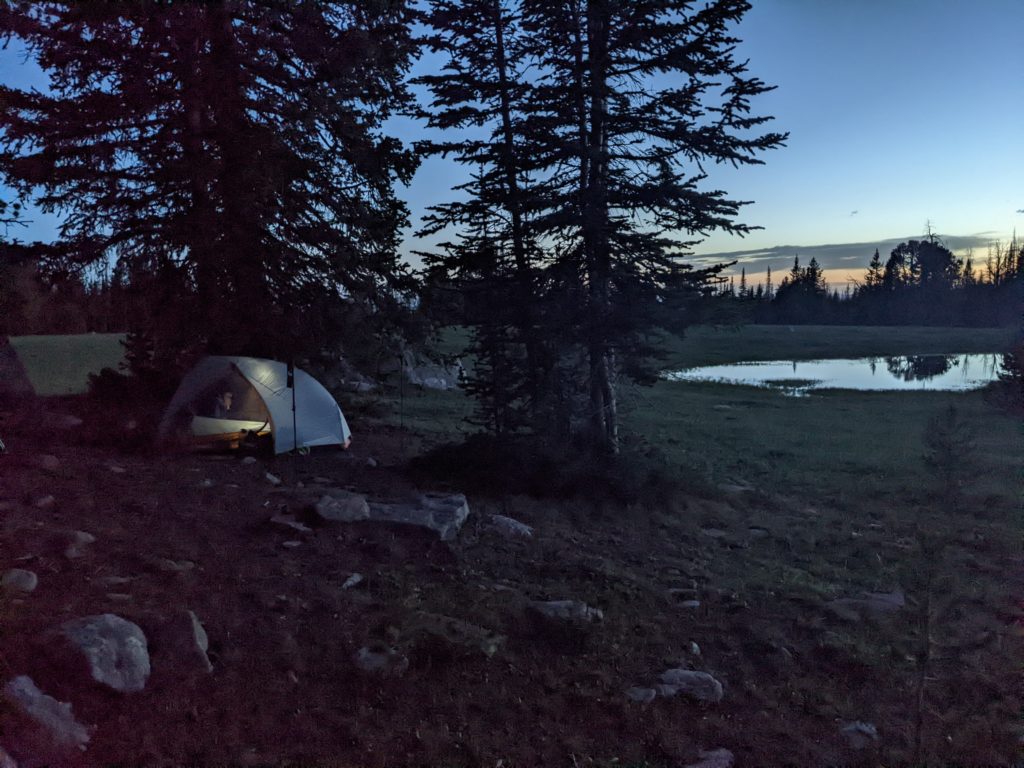
Colorado’s San Juan Range
After a stop off in Steamboat Springs in an Airbnb to log some work time, including a half day from the library, to avoid another days pricey fee, we headed south. Thanks to iOverlander, we found a convenient spot to boondock near Poncha Pass for one night on our way to explore the San Juan Range. We then set off for three nights backpacking from the Rio Grande reservoir area outside of South Fork.
It was an easy hike up the valley along a beautiful river. Again, we had two nights next to beautiful alpine lakes all to ourselves. It was a moderate hike, with lots of deer sightings! We had lots of time to explore the lakes, lounge like lizards on nice rocks. Even had time to take some cheesy yoga pose pictures.
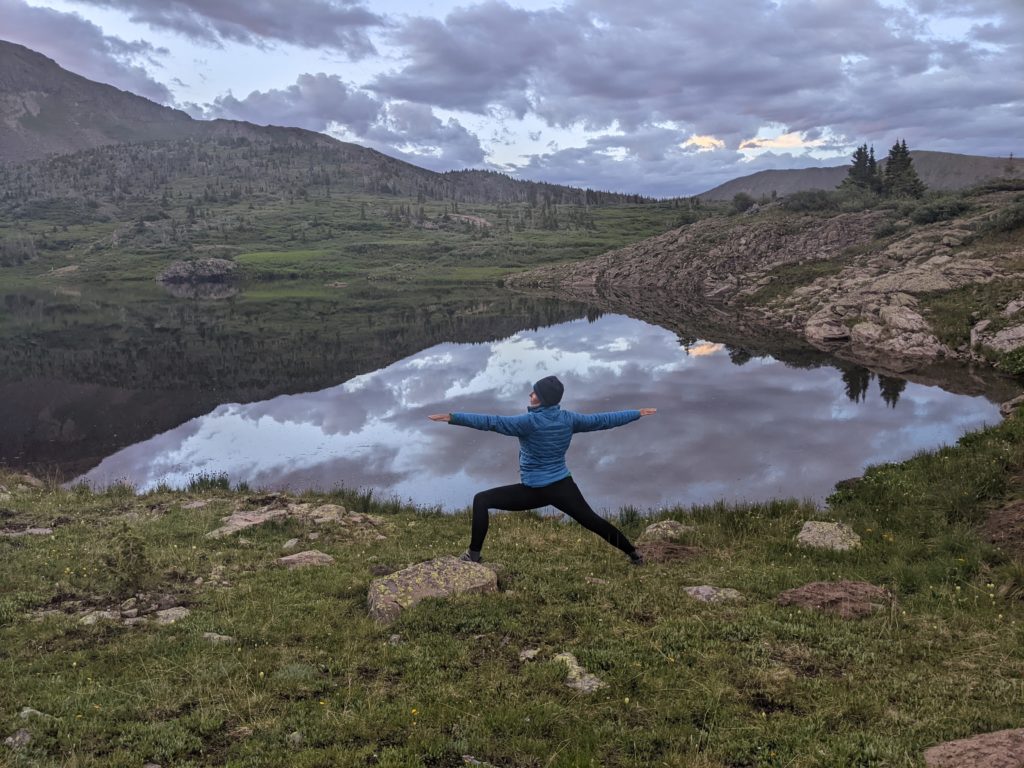
We were planning to spend 3 nights, but we felt we had pretty much taken in the place, and were dreaming of being back in the kayak. So, we decided to hike out early and spend the next day on Williams Creek Reservoir just north of Pagosa Springs.
We boondocked off a forest road near the lake, which was definitely the least glamorous of the trip. It smelled like cow and there were swarms of flies. We arrived just before dark, and pretty much just went to sleep as soon as we could. But it was all worth it when we got the SeaEagle inflated and out on the lake. We got lots of good paddling practice in exploring the water’s edge. Tried to race the geese, and saw some happy otters at play. It was a great example of how being flexible with plans, willing to change up things rather than being rigidly fixed to a schedule, can really pay off!
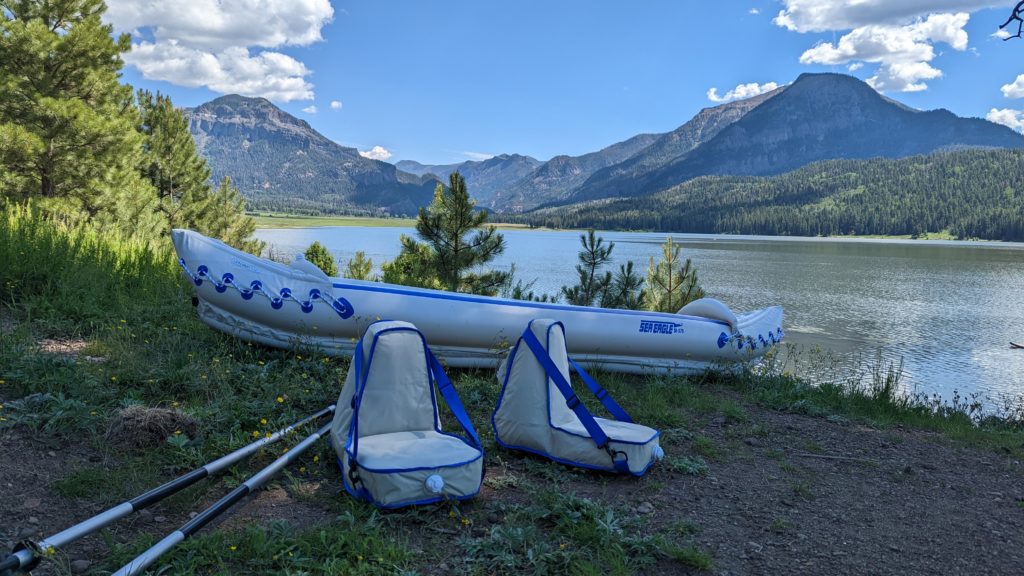
Hot Springs!
We spent the rest of our trip in Pagosa Springs, again having to work a few days from an AirBnb, and exploring the town. Not surprising based on the name of the town, Pagosa is known for their natural hot springs. The Hot Springs resort there is amazing, but not cheap. We’ve been there, and it can be worth the money.
On this trip, we were trying to be very budget conscious, so we decided to look for other alternatives. Right in town, we discovered the ‘hippy hot springs’, which is basically a pipe pouring hot water into the San Juan river. People have built up rock pools to capture the water over the years. It is free, easy to access, and we met all kinds of interesting people hanging out in them.
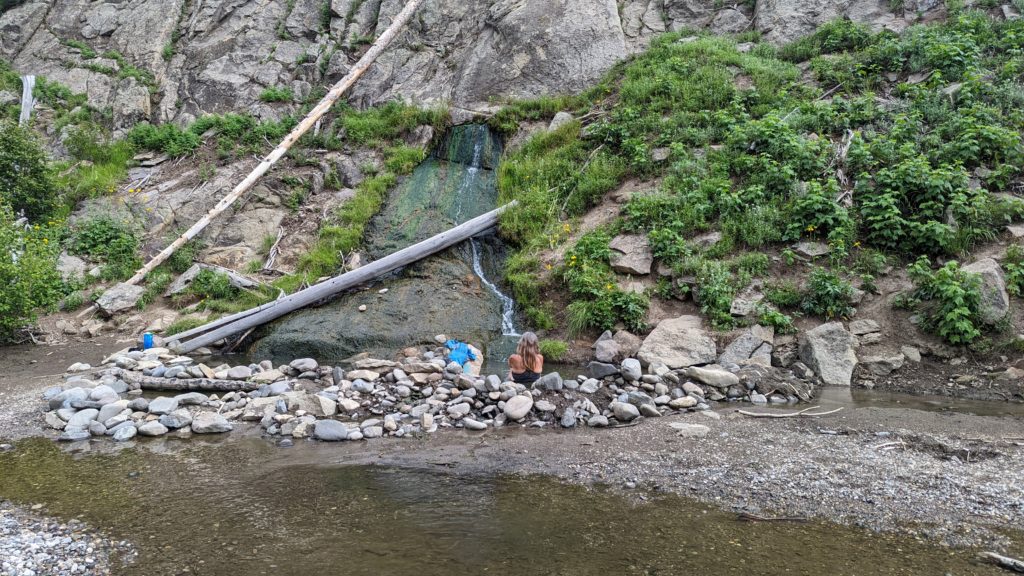
Since we were suddenly in love with hanging out in hot springs, we looked around for more in the area. We were able to sneak in a quick night of backpacking into Rainbow Hot Springs, not far from Pagosa. It is about a 5 mile hike in, and is honestly not the most pleasant hike. It goes through private land to begin, then through a pretty significant burn scar. There are a limited number of camp sights available, so if none are available, you pretty much have to be ready to hike all the way back out.
We lucked out, though, and got a great spot and had the place to ourselves for a good amount of time. There were some day hikers that came and went, and only one other overnight group. Interestingly, they had two pack llamas with them, something I had never seen before. It was amazing, and we’re already scoping out more places like this as destinations for future backpacking trips.
Affordable Way to Have Your Home Cared For While You’re Away
Another crucial ingredient that made our trip a success was affordable care for our pets and house care for while we were gone. If you don’t have a friend or family member that will do it for free, check out TrustedHousesitters. Its a service that helps home/pet owners find people who are willing to take care of them in exchange for lodging. Houses/pets and sitters have a profile with reviews, and there is some insurance involved, as well.
Paying for a housesitter or kenneling pets becomes very expensive quickly, at upwards of $50 a day. Likewise, accommodations are expensive if you’re traveling, or wanting to get away from home. If you have a nice house, well behaved pets, in a city where someone might want to spend some time, it can be a win-win situation for you and someone wanting to save a bit on housing. We had a great experience with our housesitter, and look forward to being a housesitter in the future, too!
Lessons from the Experiment
The experiment was, overall, a great success. Our camper truck build was functional and comfortable. Boondocking spots were generally easy to find, safe and nice. We did not get home sick, and in fact, it was hard to turn the truck in the direction of home when the time came. We were able to keep our jobs happy, although it was a struggle sometimes from the road. Not having a proper set-up, navigating how to both have conference calls from one small AirBnb, unexpected construction noise right outside the window, etc. We were definitely challenged from time to time.
The backpacking was great, and got easier the more we did it. I can throw everything I need, perfectly arranged in my bag and be out the door now in no time. However, we learned that you need to let the dopamine receptors in your brain rest a little bit in between amazing experiences. When we started to be like ‘oh, there’s another amazing, pristine mountain lake….whatever’….that’s when I got a little alarmed. I think to truly appreciate things we need to space the trips out a little bit more.
To sum it up, the things we thought we’d like, we did, and we found a few more things that we didn’t even know we would like! One month is too short, so next time we’ll shoot for longer. In terms of expense, our month of adventure cost about what a couple would spend for a week at an all-inclusive Mexican beach resort. I think its safe to say there will be more trips like this in my future!
Live a Life You Love
Tired of feeling stuck? Let’s create your escape plan. Schedule your free session today.

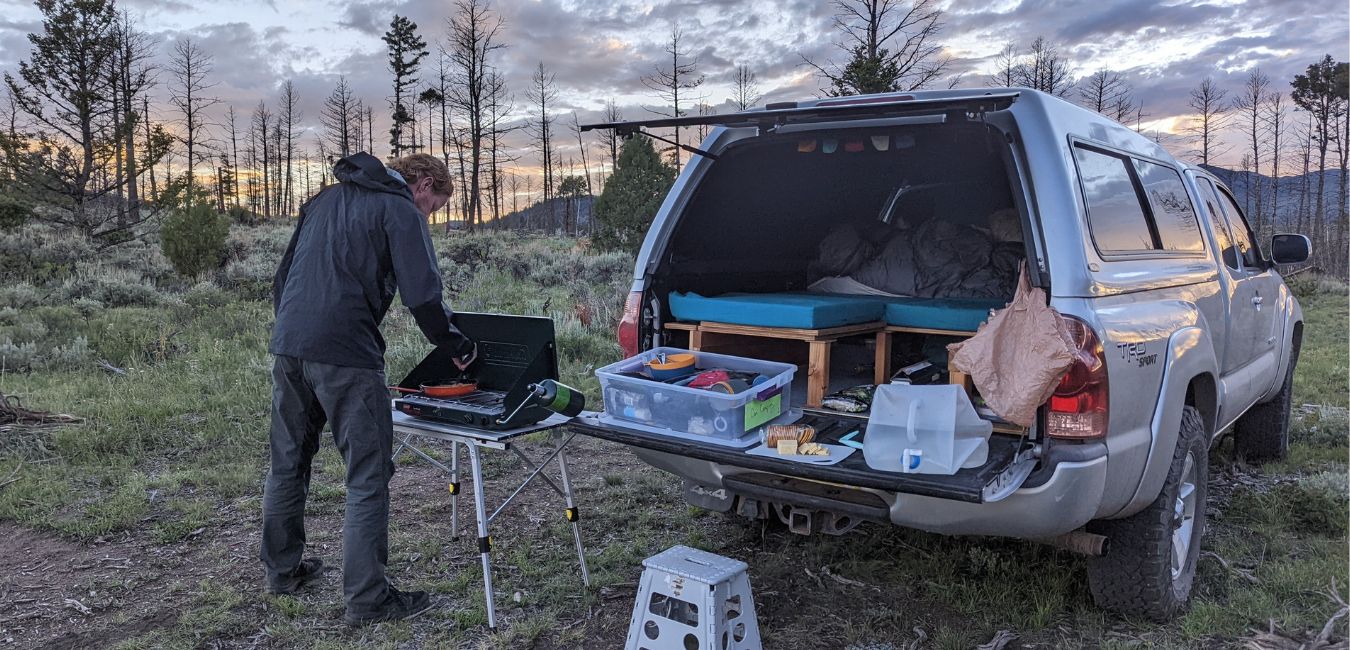
Leave a Reply